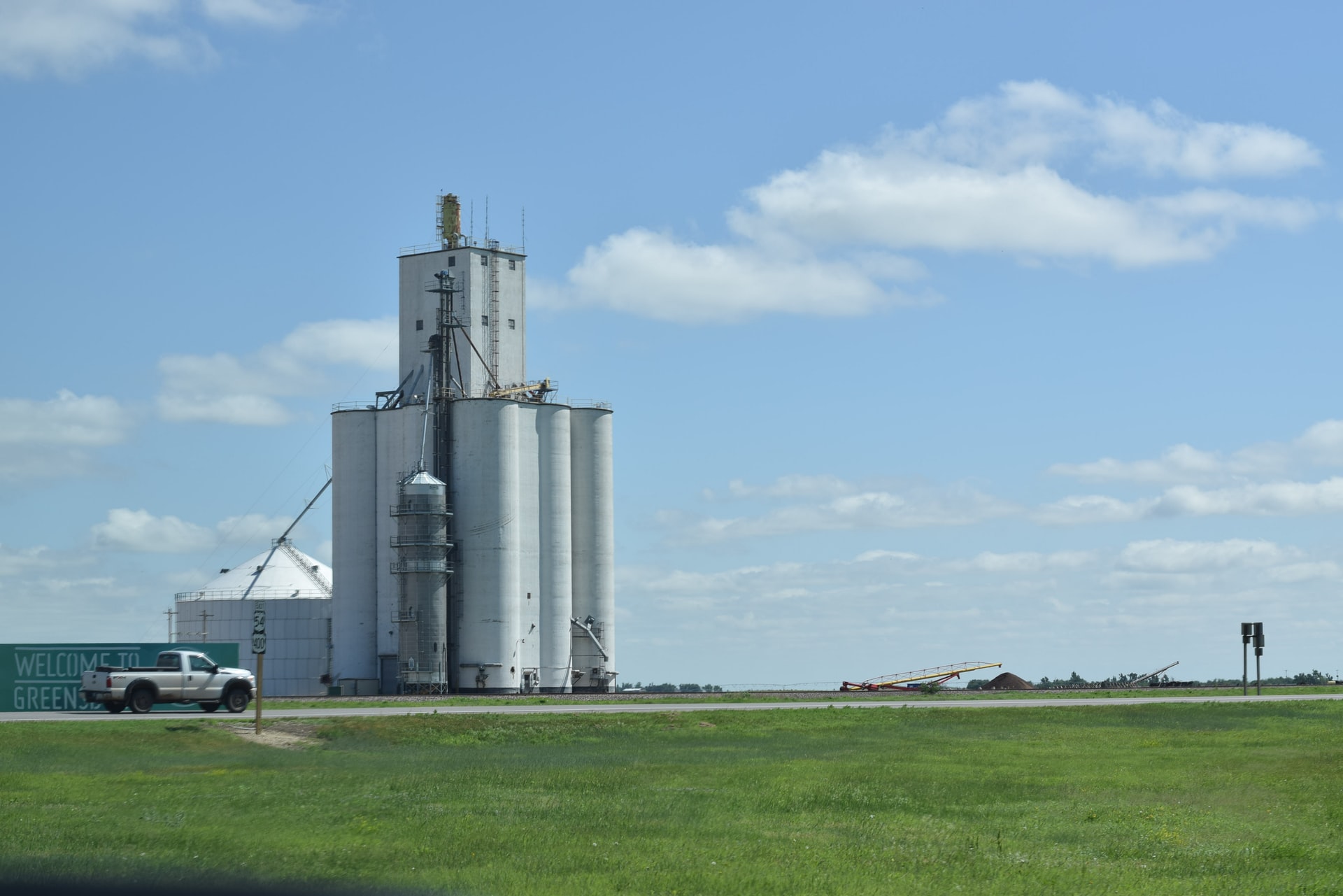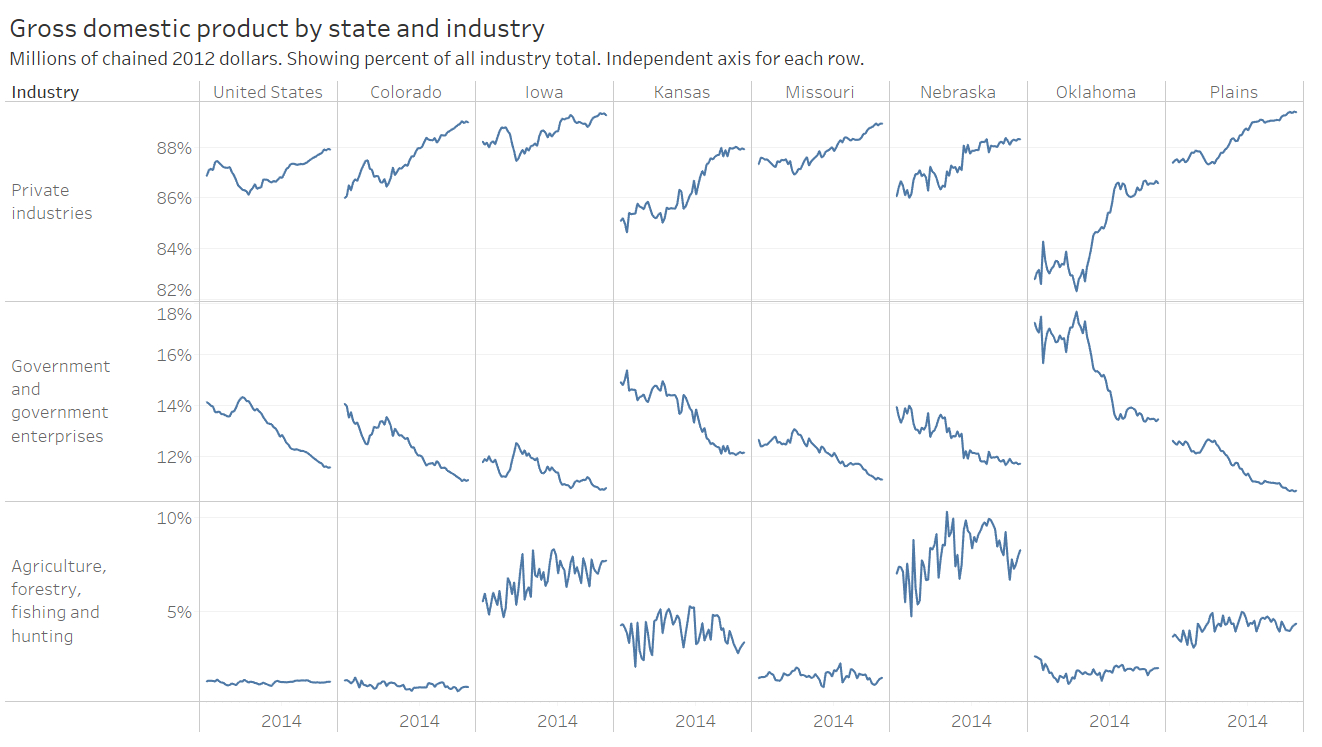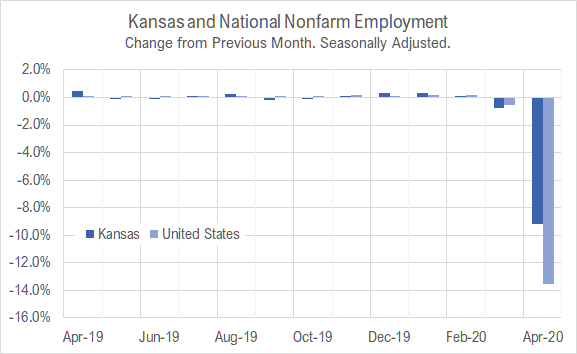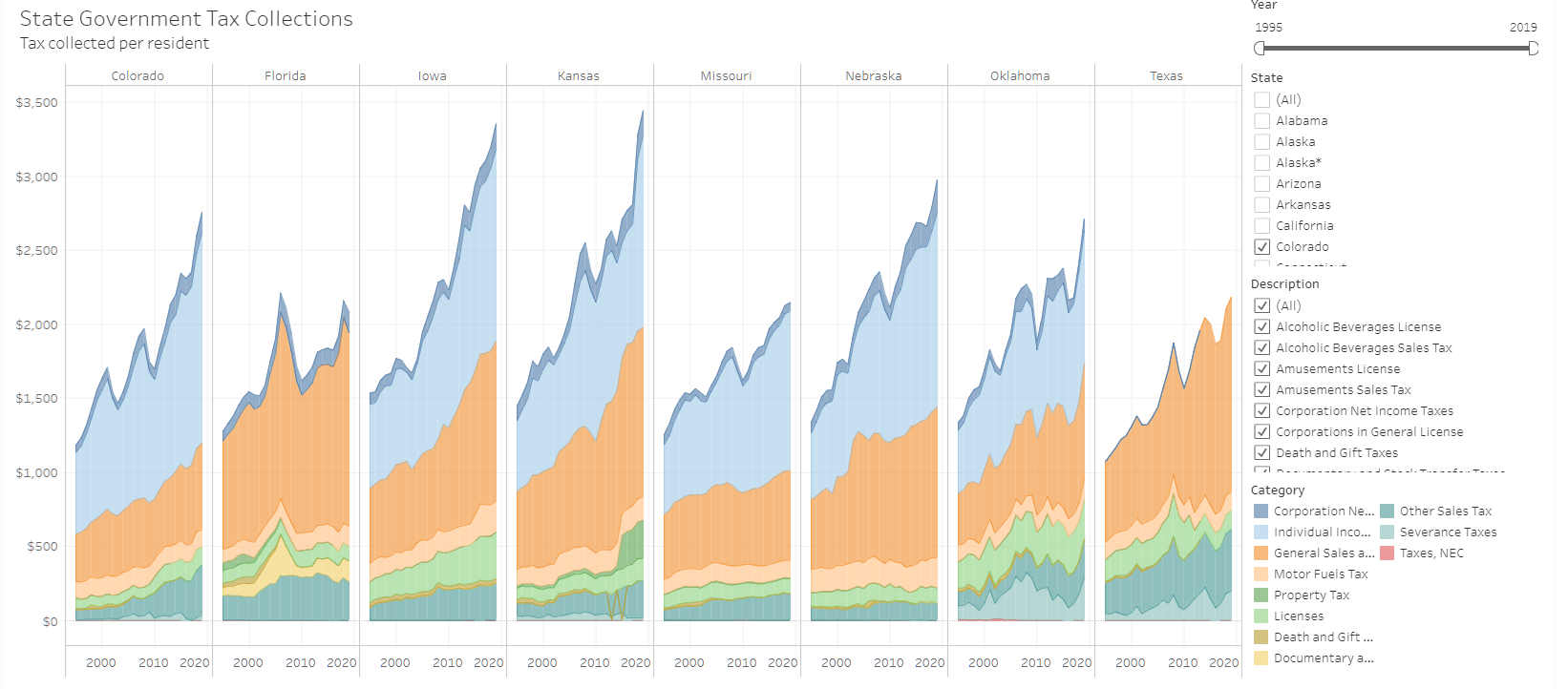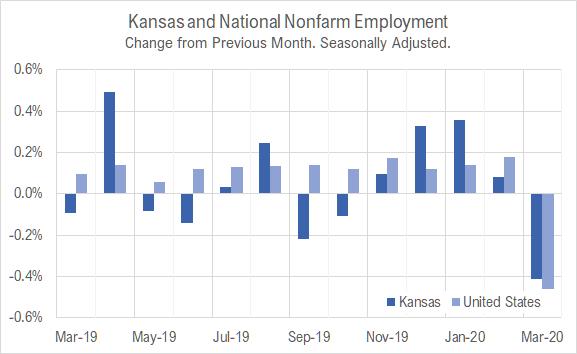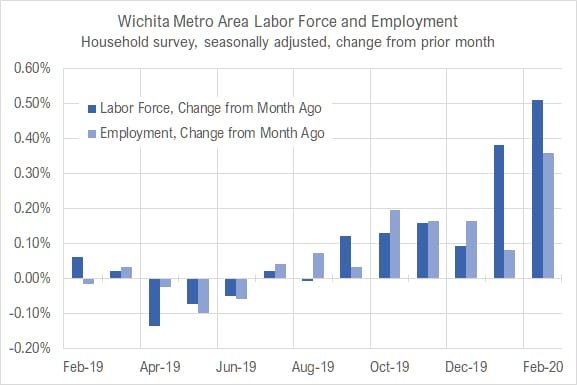After falling sharply in April, employment in Kansas rose in May 2020 as the response to the pandemic continued to affect the economy.
Data released this week from the Bureau of Labor Statistics, part of the United States Department of Labor, shows the effect of the pandemic and the response to it on employment in Kansas for May 2020.
(Click charts and tables for larger versions.)
Using seasonally adjusted data, from April 2020 to May 2020, nonfarm employment in Kansas rose by 24,200 (1.9 percent). Over the year, the number of Kansas nonfarm jobs for May 2020 fell by 110,100 (7.7 percent) over the same month last year. This is using seasonally adjusted data. The non-adjusted figure is 110,000 (7.7 percent).
Over the year (May 2019 to May 2020), the Kansas labor force is up by 22,288 (1.5 percent) using seasonally adjusted data, with an increase of 1,754 (0.1 percent) over the last month. Non-seasonal data shows an increase of 22,681 (1.5 percent) in the labor force over the year.
Of note: While the number of jobs and working people rose by large amounts in May, both are still much smaller than before the response to the pandemic.
The number of unemployed persons fell from April 2020 to May 2020 by 27,933 (16.1 percent). The unemployment rate was 10.0 percent in May, up 6.9 percentage points from one year ago, and down 1.9 percentage points from last month.
Comparing Kansas to the nation: Using seasonal data, Kansas nonfarm jobs fell by 7.73 percent over the past 12 months, while national jobs fell by 11.73 percent. Non-seasonal data shows Kansas nonfarm jobs falling by 7.74 percent over the past 12 months, while national jobs fell by 11.76 percent.
Click charts and tables for larger versions.
In the following chart showing job changes from the previous month, the magnitude of the April and May changes overwhelms the other months. The rise in May employment is much larger than experienced in any other month during the past year.
In the following chart of showing job changes from the same month one year ago, the April and May figures are much larger than any other.
The May release contained figures for industry groups. The following chart shows the number of employees in May 2019 and May 2020.
This chart uses the same data, showing the percent change from last May. Leisure and hospitality rose the most, proportionally, after losing the most in April, again proportionally. Construction showed the smallest proportional loss.
Photo by Krista Joy Montgomery on Unsplash
